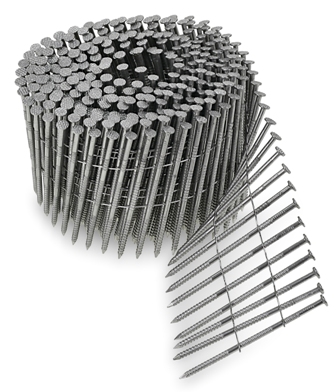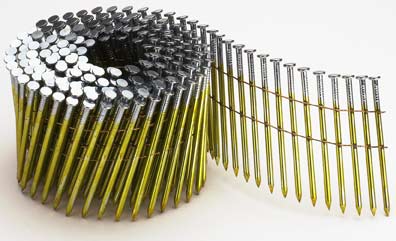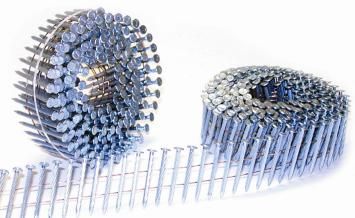What Type Of Nail Is Correct For My Application?

At the end of 2013, we posted about the various components of a nail and offered some in-depth explanations as to the importance of these components. If you missed our previous posts on nail components, here is a quick refresher - with some added knowledge.
The first step is to determine what collation angle your tool is designed to run. Some degrees include 20 °, 35 °, 28 ° and 15 °. The next step would be to classify what types of collation the tool handles. Collations include plastic, wire and paper - which can be used in place of plastic.

When you have completed the nail classification, you will then determine the tool range. The length and diameter are known as the range. Length is the size of the nail, each tool will have a minimum and maximum length. Note: some nails are sized in pennies (symbol, D). Diameter is the thickness of the shank or wire gauge. The bigger the number, the thicker the nail.
The type of nail can be broken into three categories; head, point and shank. Head types include duplex, headless, finish, drywall, clipped and full round which is the most common. The type of point determines how the nail will penetrate into your application and the splitting severity. The most common is chisel (diamond) point and the easiest to drive. It is ideal for soft wood applications. Blunt point allows minimal penetration resistance and is commonly used in pallet construction. Flat point, also known as chisel point, requires the most drive power and is frequently used with a screw shank nail.

The nail shank is the part on the nail which does most of the holding. The shank is one of four types: smooth, spiral, ring or screw. Smooth shank nails have exactly that: a smooth appearance and has the least holding power. Spiral shank nails have either a threaded appearance, like a screw, or they can have a helical twist to them. Screw shank nails are used in hardwood applications. Ring shank nails have a series of rings punched into the surface of the shank and offers the most holding power.
The nail finish can be bright, cement coated, electrogalvanized, hot dipped galvanized, flash-coated with zinc, hardened steel, stainless steel or aluminum. These different finishes, coatings or material of nails give different levels of protection of resistance to rusting or other special properties to certain applications.

The factors mentioned above such as degree, collation type, nail size and shank diameter can all affect the compatibility of nails with any nail gun. Contact Nail Gun Depot Customer Service to confirm compatibility and determine the best nail for your application. You can also use Nail Gun Depot's Fastener Finder Tool to locate the right nail for your tool.



What kind of nail gun do you recommend??
Or what kind of nails I need???
Thanks
A brad nailer will not shoot ring shank framing nails. You would need a framing gun for that. For a privacy fence, you'll definitely want a <a href="https://www.nailgundepot.com/nailers/framing-sheathing-nailers" rel="nofollow"><strong>framing nailer</strong></a> or <strong><a href="https://www.nailgundepot.com/nailers/siding-fencing-nailers" rel="nofollow">fencing nailer</a></strong>.